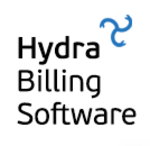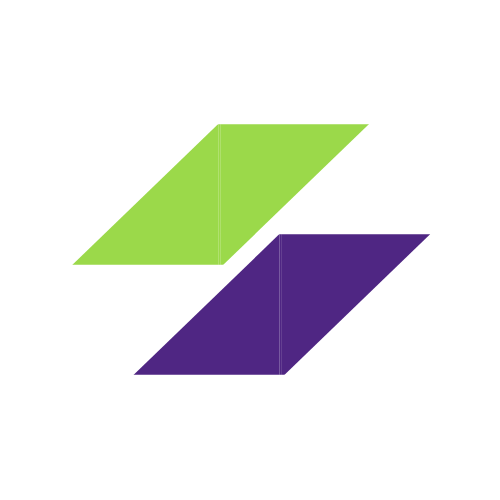Description

Elorus

Trexle
Comprehensive Overview: Elorus vs Trexle
Elorus Overview
a) Primary Functions and Target Markets:
- Primary Functions: Elorus is a cloud-based invoicing and billing software designed for freelancers, small businesses, and agencies. Its main features include invoice creation and management, expense tracking, time tracking, and client management. It also offers reporting and analytics to provide insights into financial performance.
- Target Markets: Elorus targets freelancers, consultants, small to medium-sized businesses, and creative agencies that need a streamlined way to handle invoicing and financial tracking. Its flexibility and scalability make it suitable for businesses looking to automate billing processes and manage finances efficiently.
b) Market Share and User Base:
- Market Share: While specific market share data for Elorus may not be publicly available, it competes with other invoicing and billing software like FreshBooks, QuickBooks, and Zoho Invoice. It may have a smaller market share when compared to these established giants due to its niche focus and specific target audience.
- User Base: Elorus has a growing user base among freelancers and small businesses, primarily in regions where its pricing structure and feature offerings are highly competitive. However, it is not as widely recognized as some of the bigger players in the invoicing software market.
c) Key Differentiating Factors:
- Customizable Invoices and Detailed Reporting: Elorus provides highly customizable invoice templates and extensive reporting capabilities, which are valued by users looking for detailed financial insights.
- Focus on Collaboration: The software emphasizes collaboration by allowing multiple users to work together on financial documents, making it advantageous for small teams.
- Value for Money: Competitive pricing is a significant advantage for Elorus, providing robust features at an affordable rate, especially for freelancers and small business owners.
Trexle Overview
a) Primary Functions and Target Markets:
- Primary Functions: Trexle is a payment gateway integration platform that simplifies the process of connecting e-commerce platforms with payment processors. Its features include secure payment processing, fraud prevention, and support for multiple currencies and payment methods.
- Target Markets: Trexle is targeted at online retailers, e-commerce businesses, and developers who need a seamless integration between their e-commerce stores and various payment gateways. Its primary appeal is for businesses looking to expand their payment processing capabilities across different regions and currencies.
b) Market Share and User Base:
- Market Share: Trexle operates in a niche but vital segment of the e-commerce market. It is one of many payment gateway integration platforms, competing with well-known players like Stripe, PayPal, and Braintree. However, due to its specialized focus on integration, it has a moderate yet focused market presence.
- User Base: Trexle is used by a variety of businesses that require efficient payment gateway integration, including startups, growing e-commerce businesses, and developers looking for a simple API to facilitate secure payments.
c) Key Differentiating Factors:
- Ease of Integration: Trexle simplifies the integration process for developers by providing a unified API that connects multiple payment processors, reducing the time and complexity involved in integrating separate gateways.
- Broad Payment Gateway Support: It supports a wide range of payment gateways, making it a versatile choice for businesses operating in multiple countries or regions.
- Focus on Security: With a strong emphasis on providing secure transactions and fraud prevention, Trexle is appealing to businesses that prioritize payment security.
Comparison and Key Differentiators
- Functionality and Focus: While Elorus focuses on invoicing and billing solutions primarily for freelancers and small businesses, Trexle specializes in payment gateway integrations for e-commerce platforms. Their functionalities are complementary but cater to different aspects of a business's financial operations.
- User Needs: Elorus addresses financial management and reporting needs, while Trexle addresses the need for streamlined payment processing and gateway integration.
- Market Segment and Reach: Both products serve different market segments, with Elorus appealing to service-based industries and Trexle appealing to product-based e-commerce businesses.
- Customization and Flexibility: Elorus offers more customization in terms of invoicing and financial reports, while Trexle excels in flexible payment integrations across various platforms and regions.
Overall, both Elorus and Trexle provide valuable solutions within their respective niches, catering to distinct user needs in business finance management and payment processing.
Contact Info

Year founded :
2014
+30 27 4102 0622
Not Available
Greece
http://www.linkedin.com/company/elorus

Year founded :
2016
Not Available
Not Available
United States
Not Available
Feature Similarity Breakdown: Elorus, Trexle
Elorus and Trexle are both web-based platforms designed to assist businesses with financial and payment processing tasks. Here's a breakdown of their feature similarities and differences:
a) Core Features in Common
-
Invoicing and Billing:
- Both platforms offer invoicing solutions that allow users to create, send, and manage invoices. They support recurring billing and automated reminders.
-
Payment Processing:
- Elorus and Trexle support online payment processing, accommodating various payment gateways to ensure flexibility and convenience for users.
-
Reporting and Analytics:
- Each platform provides reporting tools to help businesses track their financial performance and gain insights into their economic activities.
-
Multi-Currency Support:
- Both solutions handle transactions in multiple currencies, catering to businesses operating on an international level.
-
Client Management:
- Both platforms include features for managing client information, which aids in organizing and streamlining customer interactions.
b) User Interface Comparison
-
Elorus:
- Elorus typically offers a user-friendly and intuitive interface, designed to cater to users with varying levels of accounting expertise. It focuses on simplicity while providing a clean and organized layout, emphasizing ease of navigation and efficiency in executing tasks.
-
Trexle:
- Trexle’s interface is more specialized towards integrating and managing payment gateways. It might be more complex when it comes to handling different payment systems but is still designed to be user-centric. The platform is oriented towards usability in payment processing management.
c) Unique Features
-
Elorus:
-
Time Tracking: Elorus offers time tracking capabilities, which can be particularly useful for service-based businesses that bill clients based on hours worked. This feature is tightly integrated with its invoicing system.
-
Project Management: Elorus also includes some basic project management features, allowing businesses to keep track of project progress, tasks, and associated billing.
-
-
Trexle:
-
Extensive Payment Gateway Integration: Trexle stands out with its focus on payment gateway integration, supporting a wide range of gateways. This makes it a strong choice for businesses looking to integrate multiple payment processing solutions and manage them from a single platform.
-
API for Custom Integrations: Trexle offers robust API capabilities to help businesses build custom integrations, which can streamline processes and enhance functionality tailored to specific business needs.
-
Conclusion
While Elorus emphasizes comprehensive billing solutions with added functionalities like time tracking and project management, Trexle shines in its payment processing integrations and customization capabilities. Businesses must choose based on their priority on billing complexities vs. payment integration requirements.
Features

Not Available

Not Available
Best Fit Use Cases: Elorus, Trexle
Certainly! Let's delve into the best fit use cases for Elorus and Trexle, emphasizing the types of businesses, projects, scenarios, and how these products cater to different industry verticals or company sizes.
Elorus
a) For what types of businesses or projects is Elorus the best choice?
Elorus is an ideal solution for:
-
Small to Medium-Sized Enterprises (SMEs): Especially those in the service industry like freelancers, consultants, agencies, and small firms that require robust invoicing, expense management, and time-tracking functionalities.
-
Project-Based Businesses: Companies or entrepreneurs who manage multiple projects concurrently can benefit from Elorus's strong project management features, which allow for tracking billable hours and managing resources effectively.
-
Freelancers and Independent Contractors: Individuals needing a streamlined solution for managing invoices, client information, and payments, while maintaining visibility on time spent on various client projects.
-
Professional Services: Such as legal, accounting, and consulting firms that demand precise time tracking and billing capabilities to ensure accurate client invoicing.
Elorus caters well to businesses that prioritize ease of use, minimal administration effort, and who may not have dedicated finance staff. It supports tracking expenses, invoices, and ensuring timely payment collection.
d) How does Elorus cater to different industry verticals or company sizes?
Elorus is particularly well-suited for smaller enterprises thanks to its user-friendly interface and affordable pricing. Its features are tailored for industries that require project-based billing and time tracking; hence, it's flexible enough for creative industries, professional services, and startups. The scalability of Elorus allows it to grow with a business, providing advanced financial management tools as needed.
Trexle
b) In what scenarios would Trexle be the preferred option?
Trexle is the preferred choice in scenarios such as:
-
E-commerce Platforms: Businesses that require a seamless payment gateway integration across various e-commerce platforms to connect with multiple payment providers easily.
-
Subscription-Based Models: Companies that offer recurring services and need to manage subscription payments efficiently and securely.
-
Enterprises Needing Payment Gateway Aggregation: Larger companies or platforms looking to unify several payment gateways under one umbrella, optimizing cross-platform integrations and simplifying transaction processes.
-
Global Transactions: Businesses conducting international sales that need flexible support for various currencies and payment methods to cater to a global customer base.
d) How does Trexle cater to different industry verticals or company sizes?
Trexle is designed to handle the complexities of payment processing, making it suitable for both small businesses just starting with online payments and large enterprises requiring sophisticated solutions for high transaction volumes. It supports a wide array of industry verticals - from retail and software services to digital content providers - by offering integration capabilities with numerous payment gateways, thus accommodating diverse transaction needs and customer preferences globally.
In conclusion, Elorus is more aligned with small to medium businesses focusing on invoicing and project management, while Trexle shines in payment processing and gateway integration, serving both small startups and large enterprises handling diverse payment needs.
Pricing

Pricing Not Available

Pricing Not Available
Metrics History
Metrics History
Comparing undefined across companies
Conclusion & Final Verdict: Elorus vs Trexle
To provide a comprehensive conclusion and final verdict for Elorus and Trexle, let's delve into each point systematically:
a) Best Overall Value
Elorus and Trexle are tools designed for different primary purposes. Elorus is a comprehensive invoicing and time-tracking software, which excels in managing billing processes and project management. Trexle, on the other hand, is focused on integrating various payment gateways to simplify ecommerce transactions.
Verdict: The best overall value depends largely on the needs of the user. If your priority is robust invoicing, client management, and financial oversight, Elorus offers the best value. However, if your primary requirement is seamless payment gateway integration for ecommerce, Trexle might provide better value.
b) Pros and Cons
Elorus
Pros:
- Comprehensive invoicing and billing solutions.
- Time-tracking features that assist in project management and productivity.
- Good client relationship management tools.
- User-friendly interface with a focus on financial operations.
Cons:
- Limited scope if the primary need is payment processing for ecommerce.
- May require additional tools for comprehensive accounting or CRM beyond invoicing features.
Trexle
Pros:
- Facilitates integration of multiple payment gateways, simplifying ecommerce transactions.
- Supports numerous currencies and international transactions.
- Streamlines the management of online sales processes.
Cons:
- Limited functionality beyond payment integration; lacks comprehensive invoicing or client management features.
- May require users to integrate additional tools for project management or financial analysis.
c) Recommendations
-
Evaluate Your Needs: Users must assess their specific requirements before choosing between the two. If your business emphasis is on detailed invoicing and effective time management for projects, Elorus is your go-to. Conversely, if your business model revolves around ecommerce with diverse gateway needs, Trexle is more suitable.
-
Consider Integration Needs: Both products may require integrations with other tools for maximum efficiency. Users should consider their current software ecosystem and choose the product that complements it without adding unnecessary complexity.
-
Try Before You Decide: Both platforms likely offer trial periods or demos. Use these opportunities to test the software's capabilities and see if it aligns with your business processes and expectations.
In conclusion, the choice between Elorus and Trexle should be guided primarily by the specific needs and priorities of the user. By understanding what each tool specializes in and how it fits into your broader business strategy, you can select the software that offers the best overall value for your unique situation.
Add to compare
Add similar companies



